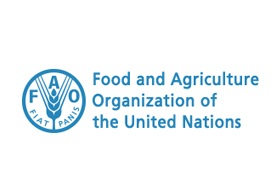
The FAO Food Price Index was down for a third consecutive month in June, a decline mostly influenced by lower wheat, maize and palm oil prices that reflected ample supplies and improved global production prospects for these commodities.
According to the latest FAO Crop Prospects and Food Situation report, the outlook for global production of cereals – a staple food in many countries – improved further with upward revisions to coarse grains and wheat supply forecasts for 2014/15.
FAO’s latest forecast for world cereal production in 2014 now stands at 2 498 million tonnes (including rice in milled terms), 18 million tonnes up from the previous figure in June, although still 1 percent (23 million tonnes) below last year’s record output. The recent upward revision reflects improved production prospects for coarse grains and wheat crops, particularly in the United States, the EU and India.
However, despite increased supplies and lower average prices, many people in conflict and drought stricken areas require external assistance for food, said the report which has a special focus on developing countries and is published by FAO four times a year.
The Food Price Index, based on the prices of a basket of internationally-traded food commodities, averaged 206.0 points in June 2014, down 3.8 points (1.8 percent) from May and nearly 6 points (2.8 percent) below the June 2013 level.
The index had risen to a ten-month high of 213 points in March 2014, but fell in April, May and June, mainly as a result of lower cereal, vegetable oil and dairy prices. Sugar prices also declined in June from May, but remained up from last year, while in contrast, meat prices on average increased from May.
Supply and demand The FAO Cereal Price Index averaged 196.2 points in June, down 10.9 points (5.2 percent) from a revised value in May and 36.1 points (15.6 percent) below last year. The slide was mainly caused by lower wheat and maize prices, both of which fell by close to 7 percent amid further improved crop prospects and diminishing concerns over possible disruption of shipments from Ukraine.
Vegetable oils averaged 188.9 points in June, down 6.4 points (3.3 percent) from May, in part reflecting a 9-month low in the price of palm oil – the most widely traded edible oil.
Meanwhile dairy prices averaged 236.5 points in June, down 2.5 points (1.0 percent) over May, a less substantial decline than the previous three months.
Meat prices however edged up, averaging 194.2 points in June on the FAO Index and 1.4 points (0.7 percent) more than in May, a reflection of constrained world supplies.












